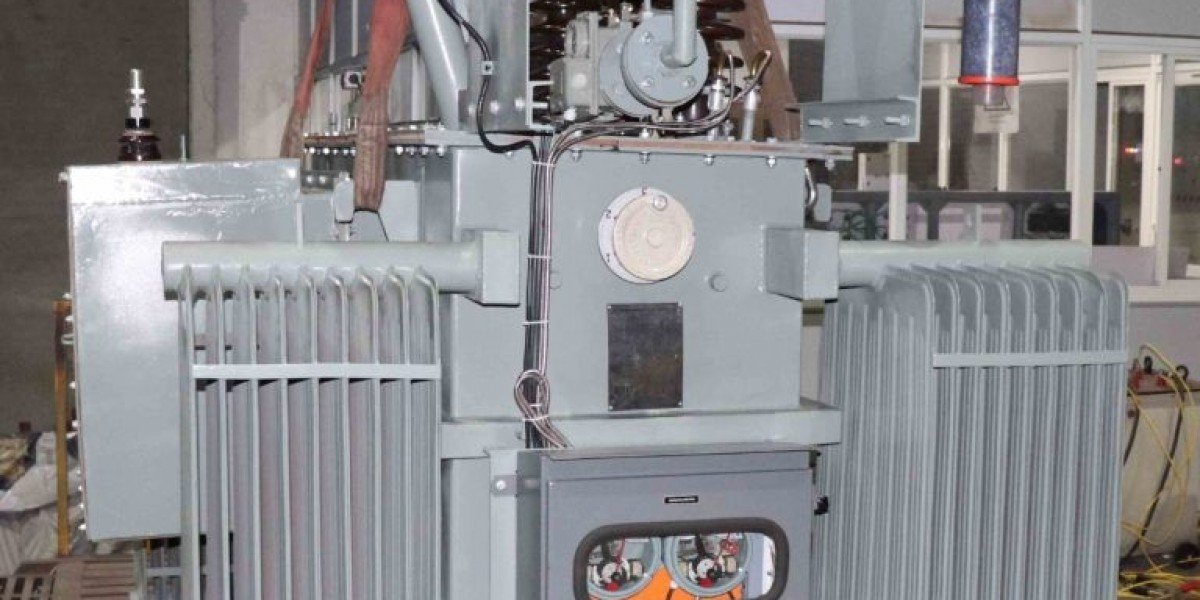Introduction
Transformers are crucial electrical devices that employ electromagnetic induction to move electrical energy between two or more circuits.. They are widely used in power distribution, transmission, and industrial applications to regulate voltage levels and ensure efficient power delivery. This article explores different types of transformers, including distribution transformers, power transformers, 3-phase transformers, and furnace transformers, discussing their features, applications, and significance in electrical systems.
What is a Transformer?
A transformer is a static electrical device that changes the voltage level of an alternating current (AC) while maintaining the same frequency. It operates on the principle of electromagnetic induction, where a primary coil induces a voltage in a secondary coil through a magnetic field. Transformers play a crucial role in the power system by stepping up or down voltages to facilitate efficient transmission and distribution.
Components of a Transformer
Core: The magnetic core is made of laminated silicon steel to minimize energy losses due to eddy currents.
Windings: Composed of copper or aluminum conductors, the windings are classified as primary (input side) and secondary (output side).
Insulation: Ensures electrical separation between windings and prevents short circuits.
Cooling System: Uses oil, air, or other mediums to dissipate heat and maintain operational efficiency.
Tap Changer: Adjusts the voltage ratio for variations in load demand.
Types of Transformers
Transformers are classified based on their application, construction, and function. The following are some of the most commonly used transformers:
1. Distribution Transformers
Definition: Distribution transformers are designed to provide the final voltage transformation in the electric power distribution system, stepping down the voltage from high transmission levels to consumer-usable levels.
Features:
Operates at lower voltage levels (typically 33 kV and below).
Designed for continuous operation with minimal losses.
Smaller in size compared to power transformers.
Available in oil-cooled and dry-type configurations.
Applications:
Residential and commercial electricity distribution.
Industrial power supply.
Renewable energy systems like solar and wind farms.
2. Power Transformers
Definition: Power transformers are high-capacity transformers used in transmission networks to step up or down voltage levels for efficient bulk power transfer.
Features:
Operates at high voltage levels (above 33 kV).
Designed to handle large power loads (ranging from 5 MVA to hundreds of MVA).
Efficient with high insulation and cooling mechanisms.
Typically oil-immersed for improved heat dissipation.
Applications:
Power generation stations.
Transmission substations.
Large industrial plants require high-voltage power.
3. Three-Phase Transformers
Definition: A three-phase transformer consists of three single-phase transformers connected together to handle a three-phase power supply, which is the standard for industrial and commercial electrical systems.
Features:
It is more efficient and compact than three separate single-phase transformers.
Reduces material and installation costs.
Operates with three primary and three secondary windings.
It can be configured as a Delta-Delta, Delta-Wye, or Wye-Wye connection.
Applications:
Industrial power distribution.
Power generation plants.
Electrical substations.
4. Furnace Transformers
Definition: Furnace transformers are specialized transformers used to supply power to electric arc furnaces (EAFs) and induction furnaces, which require high currents and variable voltages for metal melting and processing.
Features:
Designed to handle high inrush currents and frequent load fluctuations.
Equipped with on-load tap changers for voltage control.
High thermal and mechanical strength to withstand harsh industrial environments.
Often oil-cooled or water-cooled for effective heat dissipation.
Applications:
Steel manufacturing and metal refining industries.
Smelting operations.
Foundries and heavy-duty industrial applications.
Importance of Transformers in Electrical Systems
Transformers play a critical role in modern power systems by:
Enabling Efficient Power Transmission: High voltage transmission reduces power losses over long distances.
Ensuring Safe Electricity Distribution: Step-down transformers make electricity safe for residential and commercial use.
Supporting Industrial Operations: Industrial transformers cater to specialized high-power applications such as metallurgy, manufacturing, and heavy machinery operations.
Enhancing Renewable Energy Integration: Transformers facilitate the integration of solar, wind, and hydroelectric power into the grid.
Conclusion
Transformers are indispensable in electrical networks, ensuring efficient energy transmission, distribution, and utilization. Distribution transformers serve end-users, power transformers manage bulk power transfer, three-phase transformers optimize industrial power needs, and furnace transformers cater to specialized high-current applications. Understanding their functions and applications helps in selecting the right transformer for specific needs, ensuring optimal performance and energy efficiency in electrical systems.








